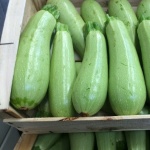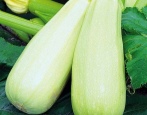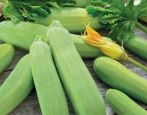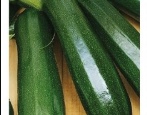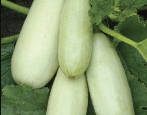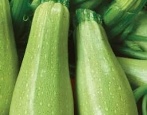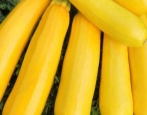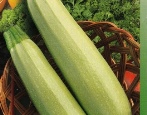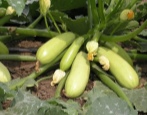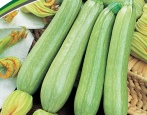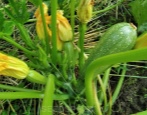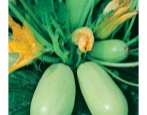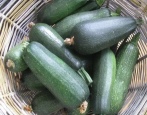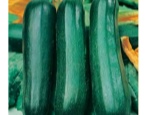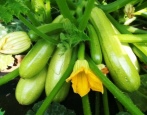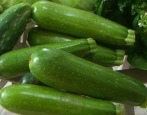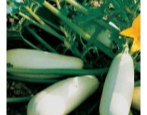
- Authors: Maksimov S.V., Klimenko N.N.
- Year of approval: 2006
- Ripening terms: mid-early
- The period from germination to harvest: 50-55 days
- Description of the plant: compact
- Leaves: medium-sized, green, heavily parted, mottled
- Fruit shape: cylindrical
- Fruit color: dark green
- Color of the pulp: light cream
- Pulp (consistency): medium, juicy
Zucchini Black Beauty is a relatively old culture. Over the years, she managed to win the love of many farmers. This variety is chosen for its early and very tasty fruits.
Breeding history
The variety originated in Russia thanks to breeders N. N. Klimenko and S. V. Maksimov. In 2006, this type of zucchini was added to the list of the State Register and became available for mass cultivation.
Description of the variety
Experts consider this variety to be a zucchini type. It is recommended to cultivate it outdoors.
Characteristics of the appearance of plants and fruits
Black handsome - an annual plant, from the genus pumpkin. It is a neat bush with powerful, long, rough stems, the diameter of which can reach 15 millimeters. The bush rises 60-80 centimeters above the ground. Green leaves ranging in size from 5 to 30 centimeters have a strong dissection and are covered with light specks, the area of which can reach half of the leaf.
The vegetable blooms in large, sunny flowers, there can be many of them - up to two dozen. The calyx is about 10 centimeters in diameter and contains 5-7 petals. This type of squash involves pollination by bees or wind.
The fruits are medium in size, stretching in length by 18-22 centimeters. Their shape resembles an oblong cylinder. Each copy weighs approximately 0.8-1.7 kilograms.
The zucchini color is deep green, close to black. The peel is smooth, shines brightly in the sun. A sluggish ribbing can be seen at the base. The pulp is colored in a pale creamy tone, it is fleshy and juicy. Seeds of moderate size are close to an ellipse in shape, have a white tint and can last up to 10 months.
Purpose and taste
The considered type of zucchini is universal. It can not only be eaten directly from the garden, cut into a salad instead of cucumbers, added to sauce, stewed or fried, but also frozen and preserved. It has a delicious, balanced, delicate taste.
Ripening terms
The black handsome is placed in the category of the mid-early species. From the moment of planting the seeds to the harvest period, as a rule, it takes 50-55 days. Much depends on the climate of the area and the care of the gardener. Zucchini can bear fruit for at least three weeks.
Yield
The described culture shows good yield. On average, without violating the elementary rules of care, a farmer can count on 391-854 centners of vegetables per hectare.
Growing regions
The geography of cultivation of the Black Beauty extends to the Volga-Vyatka, Central Black Earth, Central and North-West regions. In Central and North-West, it is advised to plant zucchini not in an open area, but in a greenhouse.
Growing and caring
Sowing the seeds of this type of squash should be started in early April. Peat glasses are prepared for the procedure, since in them the plant root is not damaged when transplanted into the ground.Garden soil and Fitosporin solution are added to the peat. The seeds are immersed in the soil for a couple of centimeters.
Seedlings will form in about a week. Seedlings need to be moisturized every day. In addition, the vegetable should receive the diffused light of the sun for at least 8 hours a day.
Young plants are moved to a permanent growing site around May 25 - June 10. By this time, the plant, as a rule, already has 2-3 leaves. It is advisable to carry out this process in the morning or when it is cloudy. On the eve of disembarkation, humus is introduced into the garden bed, and the earth is dug up. When planting, it is required to maintain a distance between the bushes in a row equal to 70 centimeters. The same distance is provided between the rows.
The soil in the hole is thoroughly crushed and irrigated with water in which fertilizers are dissolved - minerals, organic matter. As a top dressing, it is allowed to add a couple of glasses of wood ash (per 1 square meter).
Watering the Black Handsome is required systematically, as needed, once a week. At the onset of the flowering phase and the formation of ovaries, it is advised to moisten the soil a couple of times a week. Immediately after irrigation, the soil is loosened, immediately freeing the bed from weeds. If the soil was well fertilized during planting, in the future you can completely abandon feeding.
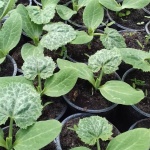
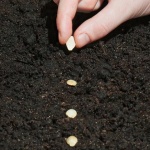
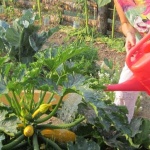
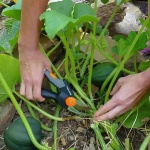
Soil requirements
The considered type of zucchini feels good in chernozem, light loamy soils, where surface waters are deep.
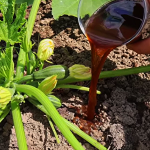
Required climatic conditions
When deciding on a plot for a garden in the country, it is worth making a choice in favor of an area perfectly illuminated by the sun.
Disease and pest resistance
The culture shows excellent resistance to the main ailments of pumpkin seeds: peronosporosis, powdery mildew, anthracnose. The variety can attack white spot, but it is not considered a disease, since this pathology does not harm the vegetation and productivity of the plant.
Review overview
Novice summer residents, along with experienced ones, approve of the above-described variety. They note that the Black Beauty pleases with an early and worthy harvest in terms of volume and taste.
